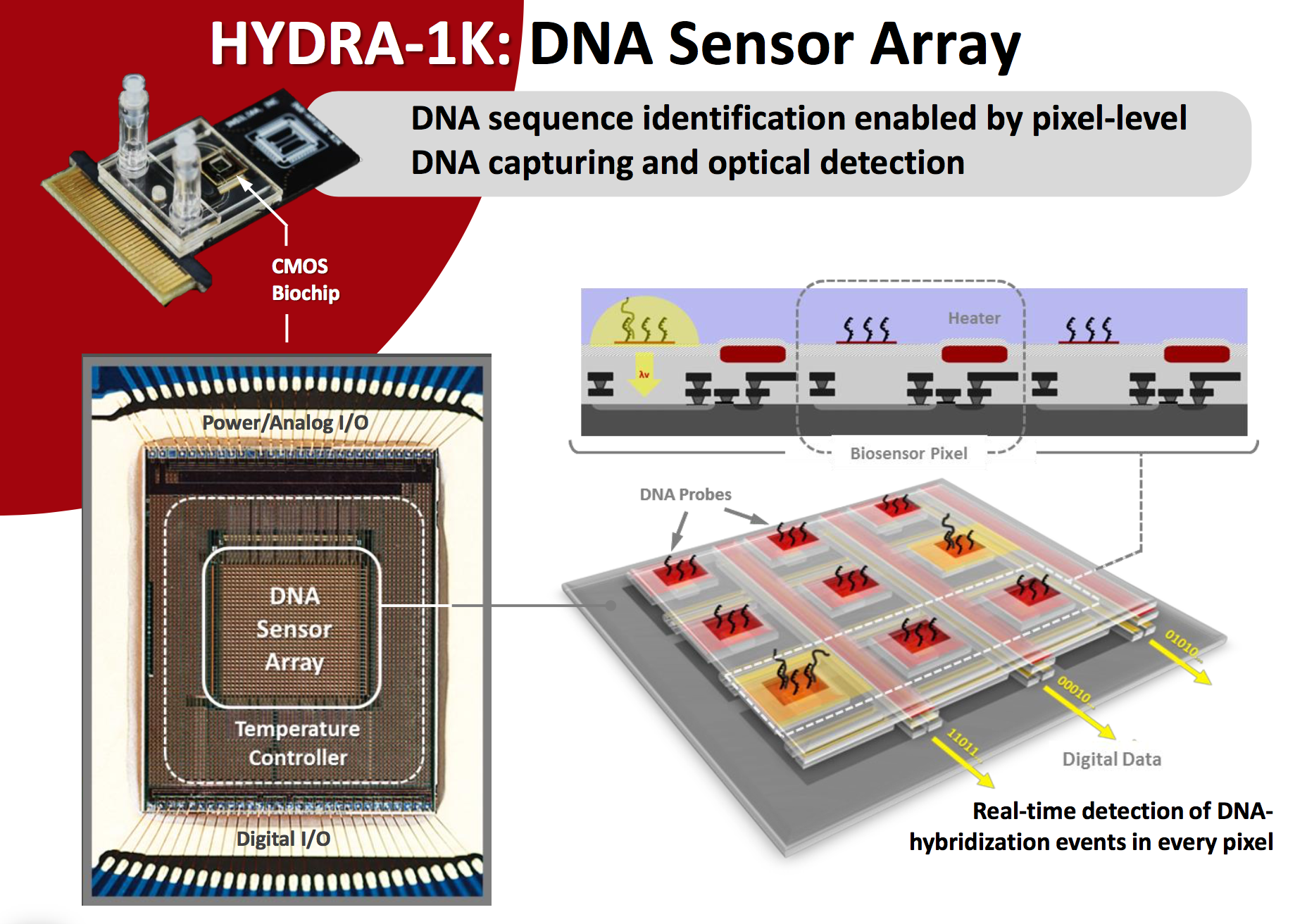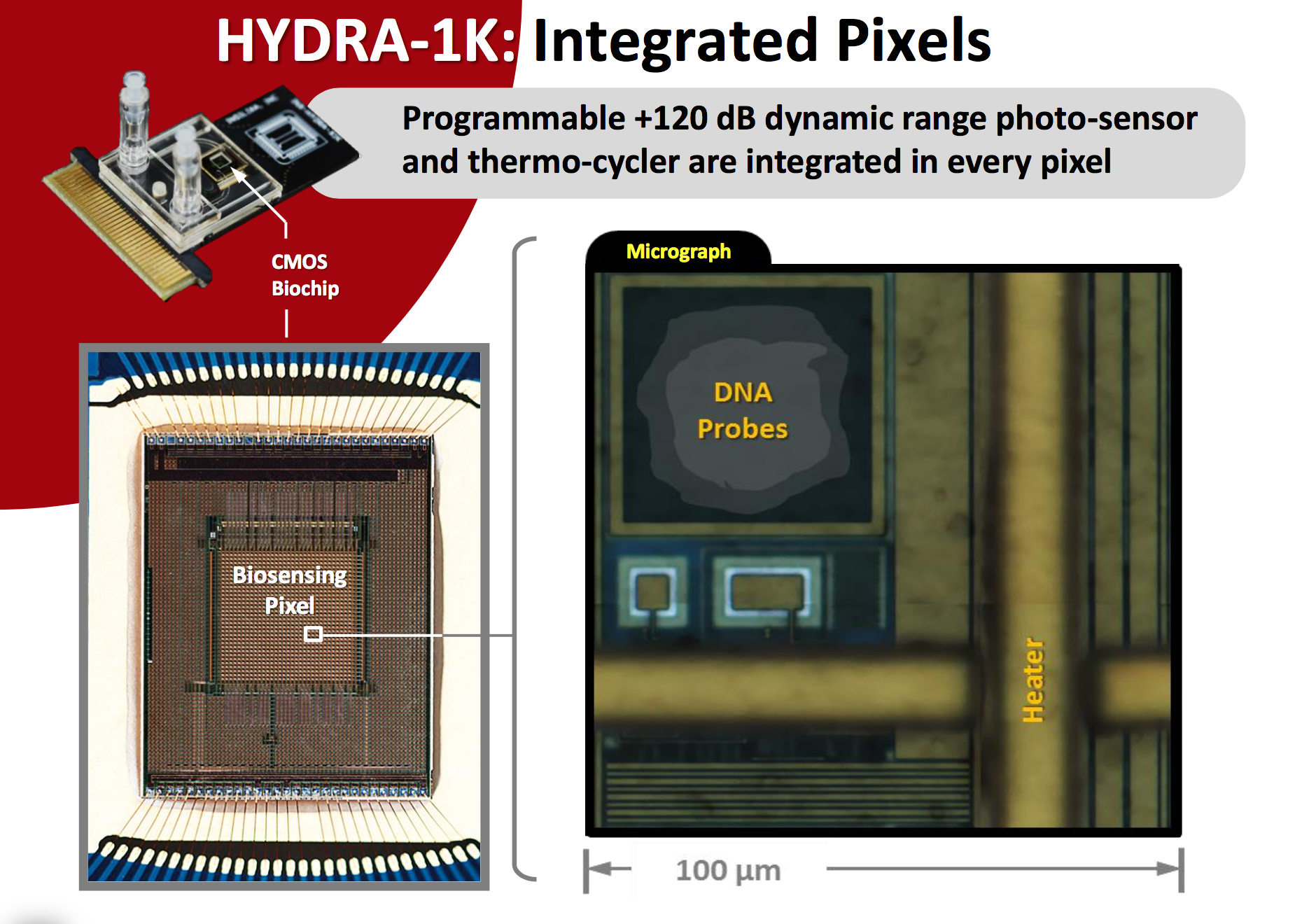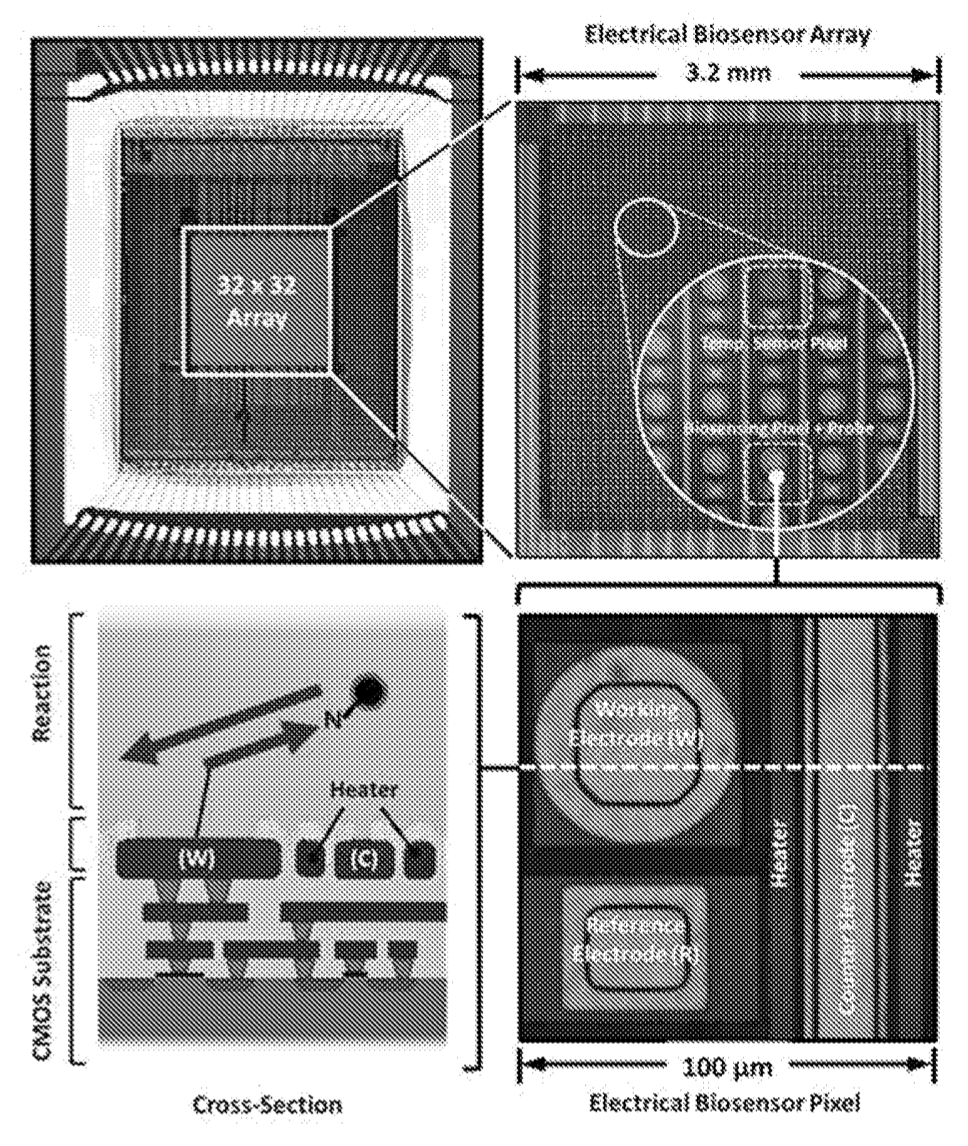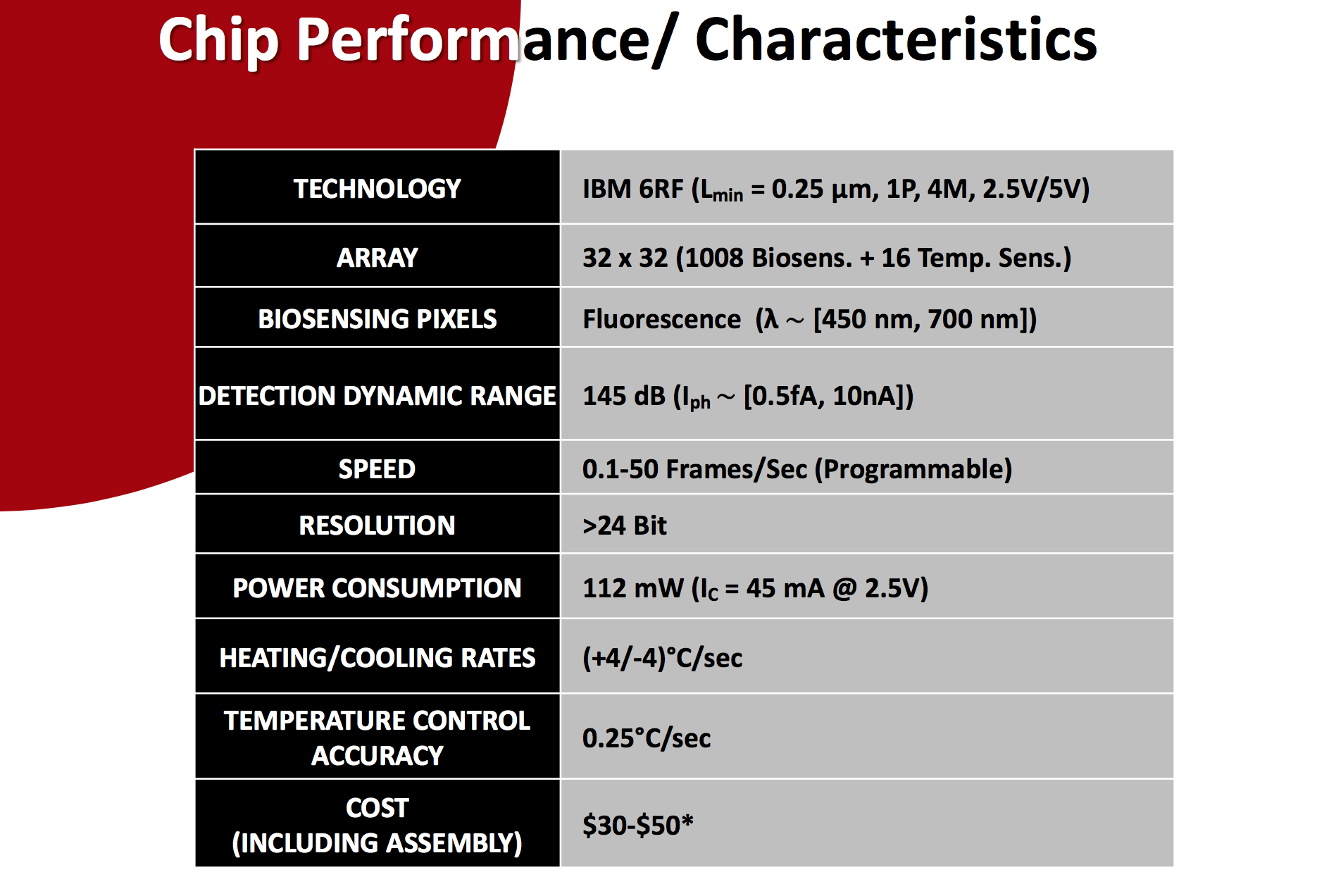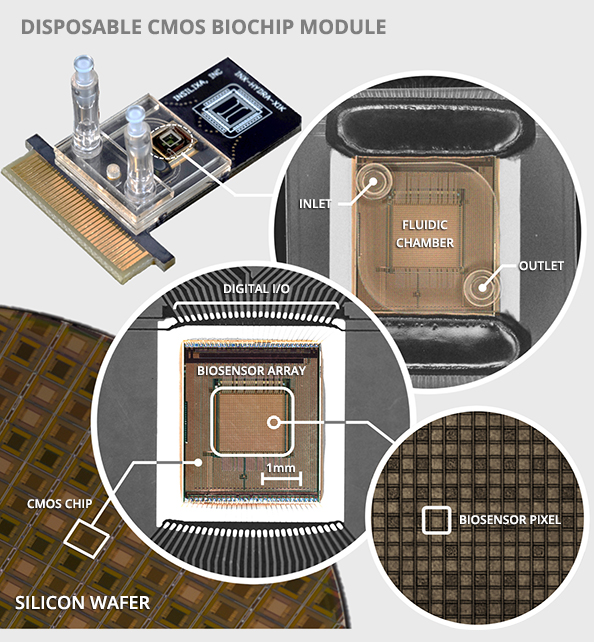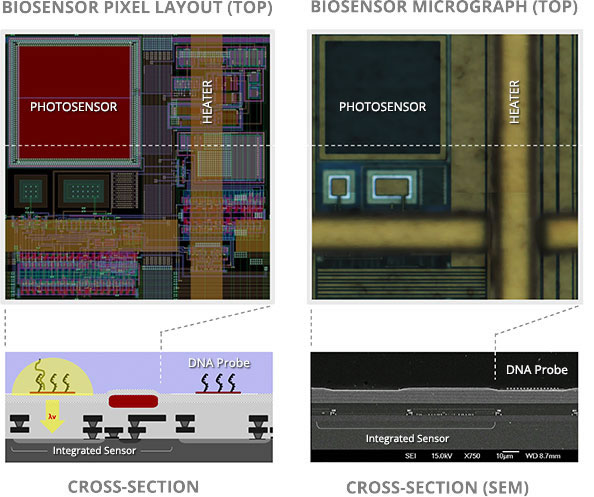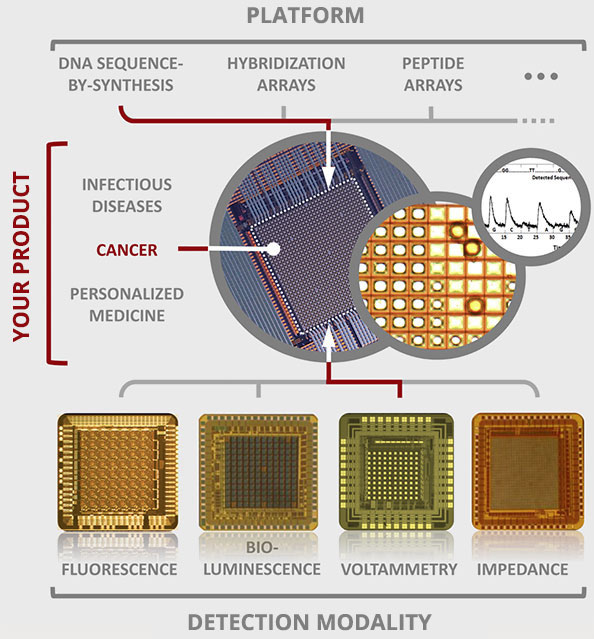InSilixa
This post reviews inSilixa, it’s a follow on from my list of sequencing companies. As we’ll see inSilixa isn’t really focused on sequencing, but it’s an interesting company anyway.
Business
inSilixa was founded in 2012, according to Crunchbase they’ve raised 13MUSD from PointGuard Ventures and Morningside Group. They appear to have received 2 SBIR grants totalling ~2MUSD. The company is based in Sunnyvale.
Technology
inSilixa appear to have a number of devices under develop, however their main focus seems to be a 1008 probe, hybridisation probe chip (other applications have been suggested, including sequencing by synthesis). The best source for most of this is a 2014 Hotchips presentation [4].
This presentation discusses a Hydra-1K chip, this is a 1008 sensor optical detection chip:
Probes are printed directly on top of sensors (printed, much like other array chips). Each sensor (photodiode) has a heater along side. This allows them to heat probes and melt them. As far as I can tell, this isn’t a TEC (Peltier) so there’s no ability to cool things back down. This seems somewhat limiting, in that the chips will start at room temperature, which may not be very well controlled.
The utility of embedding the heater on the chip isn’t so clear to me (as opposed to having a TEC attached to a jig which would mate onto the flow cell). Overall, I’m not clear that a similar device couldn’t be created by functionalizing a standard CMOS sensor… perhaps it’s related to the dynamic range required in the photodiodes.
One of the problems with hybridisation is that it’s not very specific. To get more information out of process inSilixa monitor the melting process in real-time (much like real time/qPCR). They ramp the temperature while monitoring the amount of fluorescence registered on the photodiode. This gives them a measurement of how much the DNA has melted, and allow them to generate a melting curve for each spot:
In most cases, I’d guess a mismatch should melt at a lower temperature and this should be visible on the curves.
So, that’s the system they appear to be focused on at the moment. However they also mention “ion-selective SAMs in sequence-by-synthesis arrays” on their website. That sounds pretty much like an ISFET approach, but it doesn’t look like it’s being actively explored. Bio-luminesence, voltammetry, and impedance measurements are also briefly mentioned, but there are few details on these approaches.
An interesting approach, clearly targeted at clinical diagnostics. Will be interesting to see if they make a move into sequencing in the future.
Notes
[1] https://www.crunchbase.com/organization/insilixa – 13MUSD. (2014)
[2] https://www.sbir.gov/sbirsearch/detail/412438
[3] http://www.freepatentsonline.com/WO2017155858A1.pdf
[4] https://www.hotchips.org/wp-content/uploads/hc_archives/hc26/HC26-11-day1-epub/HC26.11-3-Technology-epub/HC26.11.335-BioChip-Hassibi-InSilixa_08112014_FINAL.pdf
[5] https://www.youtube.com/watch?v=3icgDvXu1vA
